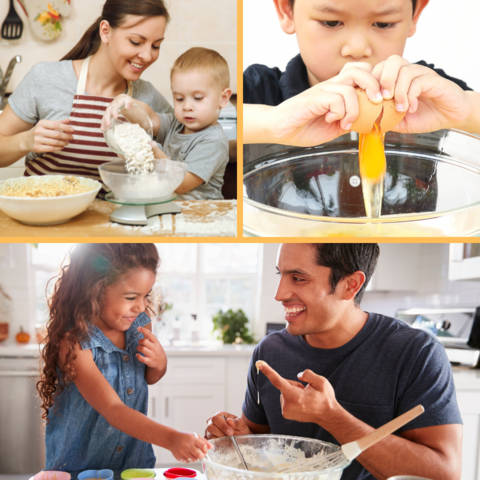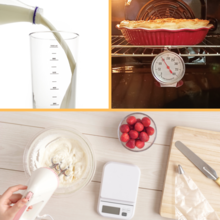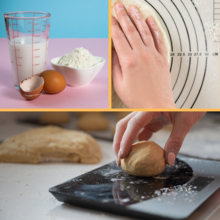Metric Kitchen: Culinary Measurement Tips

Credit:
Adobe Stock
PREPARATION

Credit:
Adobe Stock
- The concept of mise en place is used to gather all ingredients, tools and equipment before undertaking a recipe.
- When introducing a new cook or baker, adults must observe and evaluate their skills before permitting independent kitchen work. Before undertaking any recipe, collaborate to identify, discuss and avoid kitchen hazards, such as adopting food hygiene best practices, using a sharp knife, and safely applying heat using an oven. Adults must closely supervise inexperienced chefs.
SELECTING AND USING TOOLS
-
 Credit: Adobe Stock
Credit: Adobe StockUse each tool, as designed, to achieve the best measurement result and recipe outcome.
- Thermometers are invaluable kitchen tools when cooking, grilling, baking, and making candy. A simple method to evaluate a cooking thermometer is to prepare a vessel of boiling water (100 °C, sea level), then read and record the displayed temperature. Calculate the difference. Make temperature adjustments according to the difference (e.g., add or subtract degrees as needed) and/or adapt cooking times, as needed.
- Measuring ingredients by mass (weight) using an appropriate kitchen scale is a best practice to improve recipe accuracy, rather than measuring ingredients by volume using fluid or dry measuring cups.
- Using dry measuring cup (designed to measure the volume of dry commodities like sugar) instead of using a fluid measuring cup (designed to measure the volume of liquid commodities like water) is a common way of introducing measurement errors into the cooking process.
- Use good measurement techniques when reading a meniscus of a fluid measuring cup with a large surface area. Set the fluid measuring cup on a level surface to accurately read the meniscus. Read the meniscus at eye level.
- Strike off excess dry ingredients when using a dry metric measuring cup.
ADJUSTING RECIPES

Credit:
Adobe Stock
- Adjustments are needed when baking, canning, pressure cooking, and candy making at high altitudes. Consult online resources to adjust recipes.
- Have you found a delicious international recipe or a heritage recipe in need of conversion? An online cooking calculator or smartphone app can help you can convert measurement units like pounds to grams, gallons to liters, and degree Fahrenheit to degree Celsius. Remember that “customary” measures, such as teaspoons, cups, pints, quarts, and gallons, mean different things in different countries.
- The safest method to convert an ingredient in a traditional American recipe is to measure it with a traditional measuring tool, then weigh the results in grams with a kitchen scale.
- Some historic recipes may refer to metric "cup and spoon" measures, which are slightly larger than and can often be used interchangeably with the US customary "cup and spoon" measures.
- It’s important to note that there are two types of U.S. customary volume measurement units (e.g., liquid and dry). For example, fluid ounce (fl oz) and the Avoirdupois ounce (oz). This contrasts with metric volumes used in the kitchen (e.g., liter, milliliter), which are suitable for measuring both fluid and dry volume. Because much of metric cooking uses mass (weight), the density of different ingredients can be important. NIST SP 430, Household Weights and Measures, provides approximate weight of several commodities appropriate for home cooking applications.
METRIC COOKING CONNECTIONS
- Metric Kitchen
- Recipe Gallery
- Culinary Temperature
- Special Publication (SP) 1290 - NIST Metric Recipes (2023) PDF
- Banana Bread (Video)
- Brownies (Video)
- Chocolate Chip Cookies (Video)
EXPLORE THE METRIC PROGRAM
Becoming Familiar with SI | Everyday Estimation | Metrication FAQs | Prefixes | Metric Kitchen | SI Education and Training | SI Publications | Understanding Metric | Writing with Metric Units | National Metric Week | NEST-R (STEM Registry) | NIST Education Resources
Disclaimer: Any mention of commercial products within NIST web pages is for information only; it does not imply recommendation or endorsement by NIST.
Created March 1, 2023, Updated May 5, 2025

